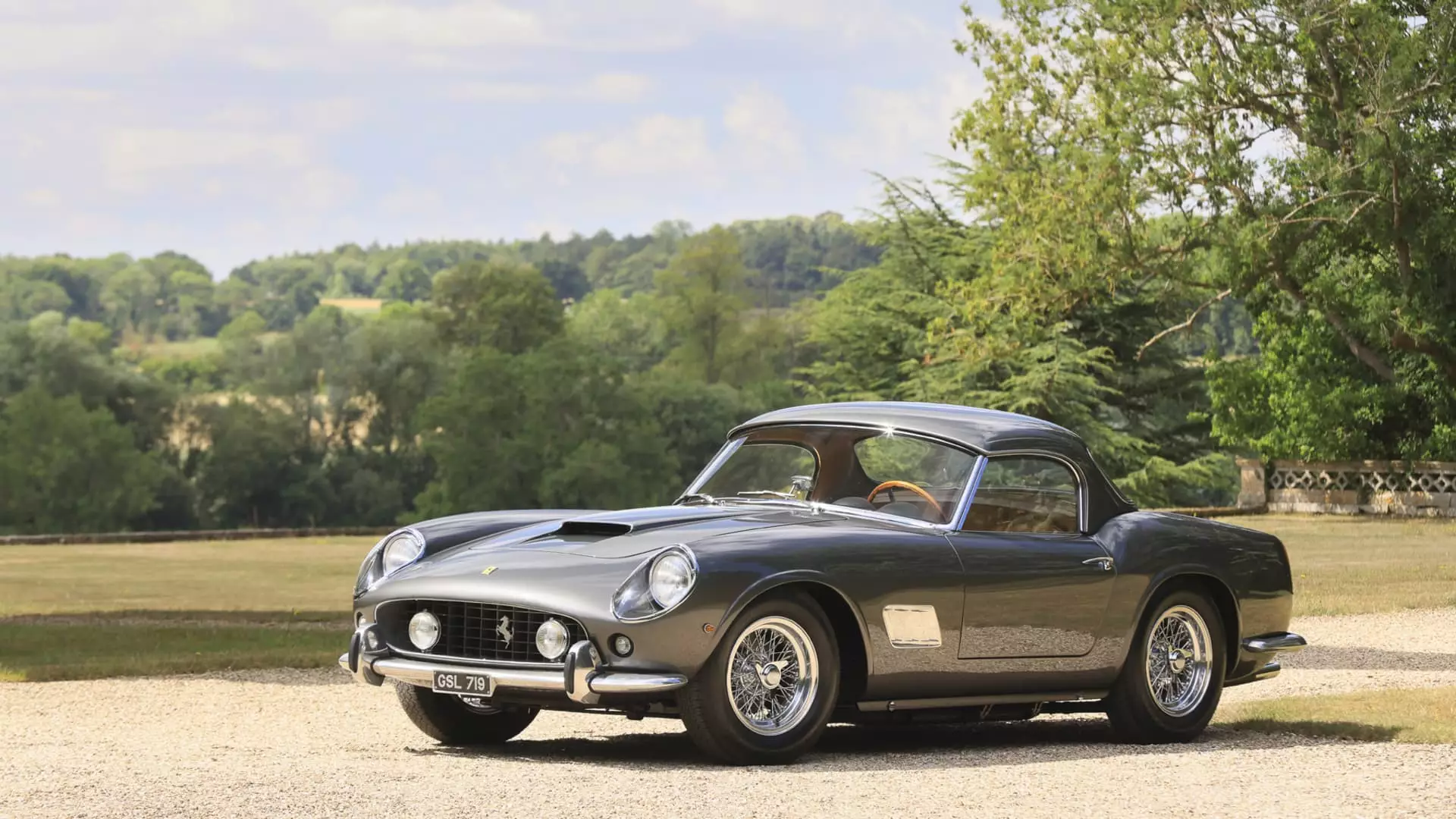The recent surge in classic car auctions, often regarded as a testament to wealth and status, is now revealing its cracks. Once a booming sector fueled by pandemic-era speculation, the collectible car market appears to be losing momentum, casting a shadow over its future. With projections estimating up to $400 million in sales at Monterey and Pebble Beach, the figures are a stark reminder that this once frothy market is now cooling off. But is this decline merely a transient correction, or does it signal a deeper, more systemic shift?
Looking beneath the surface, it becomes clear that the decline isn’t just about economic swings or geopolitical tensions—it’s about a generational gap. The vibrant market fueled by Baby Boomers, who poured substantial wealth into vintage Ferraris and other high-end classics, is aging out. Their children, inheritors of staggering wealth, are less interested in these traditionally coveted collectibles. Instead, they seek more practical, contemporary vehicles—modern supercars, exotic but accessible, and the fleeting thrill of newness rather than history.
This transition reflects broader societal values. The traditional collector’s eye—drawn to provenance, rarity, and status—begins to fade in a younger audience obsessed with usability, engagement, and affordability. Consequently, the market for 1950s and 1960s gems is oversaturated, leading to declining prices and a cautious bidding atmosphere. For many, the once galactic valuations—think $20 million+ Ferrari 250 GTs—are now a distant memory, replaced by a cautious recognition that the bubble has deflated.
Price Corridors and Private Deals: An Increasingly Dual Market
The auction scene, historically the market’s grand stage, now underscores its diminished influence. The number of ultra-expensive cars fetching over $10 million has plummeted. As Hagerty points out, only a handful of such cars remain contender-worthy, indicating a narrowing of high-end demand. This bodes poorly for sellers looking for public validation but benefits buyers who prefer discretion.
The rise of private sales further clarifies this trend. Sellers, often wealthy enthusiasts, now dodge the prying eyes of auction houses, opting instead for discreet transactions that can happen instantaneously. This shift not only signifies a diminishing confidence in auction markets but also hints at a redistribution of wealth and a changing attitude towards fame and status. When assets can be liquidated privately, without the spectacle, it suggests a more pragmatic approach to collecting—one that values privacy over prestige.
Simultaneously, classic cars from the 1980s and 1990s—more accessible, more modern, and arguably more relevant—are commanding rising prices. The market dynamics are shifting, driven by a younger demographic that doesn’t view a 1960s Ferrari as practical or desirable in contemporary life. Instead, they gravitate toward high-performance, high-quality vehicles they can enjoy without the maintenance headache or historical reverence that older models demand.
The Rise of the Next-Generation Collector
Perhaps the most impactful trend lies in the shifting gears of who is buying. The generation coming into wealth—Millennials and Generation Z—has different tastes, priorities, and values. Their monetary resources, estimated to be in the trillions, are now fueling a new kind of collector, one less fixated on rarity and more interested in relatability and usability.
For these younger buyers, the aesthetic appeal of a 1980s Porsche or a later-model supercar holds more appeal than a rare, fragile 1950s classic. They seek electric or hybrid classics, or at least models that promise less hassle and more driving enjoyment. This not only indicates a change in taste but also reflects a broader recognition of sustainable values and technological innovation.
This generational shift is perhaps the most profound. It suggests that the traditional notions of collecting as an investment—holding assets that appreciate over time—are giving way to a more pragmatic approach. Wealth is passing hands, not just in amounts but in mindset, moving away from accumulation of historical treasures to a more functional sort of collecting—one focused on experience, usability, and cultural relevance.
Overvaluation and Snobbery Under Scrutiny
The inflated valuations and speculative behaviors that once fueled the classic car market now seem increasingly unsustainable. The frenzy to acquire increasingly obscure models, often driven more by the prospect of resale profits than actual passion, risks turning collecting into a superficial game. Kidston’s observation that collecting shouldn’t be purely about investment—yet often becomes so—resonates deeply. When echoes of “get it now or miss out” dominate, it erodes the authenticity of the pursuit.
This bubble warns of a realignment: prices are adjusting, not necessarily because of intrinsic value, but because of shifts in buyer psychology and market composition. The high-end market, once a playground for the ultra-rich to showcase cachet, is now more about subtlety and discretion. The spectacle of multimillion-dollar cars dominating auction headlines is being replaced by private deals and a lower profile.
This transformation raises questions about the future of classic and exotic cars as symbols of wealth. Will they retain their allure, or will they become relics of an era of excess? As the market recalibrates, it becomes crucial for collectors—new and old—to reconsider what it means to truly appreciate these machines, beyond their monetary value. Perhaps the era of superficial bidding wars and inflated valuations is nearing its end, replaced by sustainability, authenticity, and a renewed sense of purpose in collecting.
—
Note: This article offers a critical perspective rooted in the belief that markets evolve and that genuine passion must guide collecting, not merely profit or status. It recognizes economic and generational shifts but advocates for a more mindful, value-driven approach to the future of automotive collecting.

